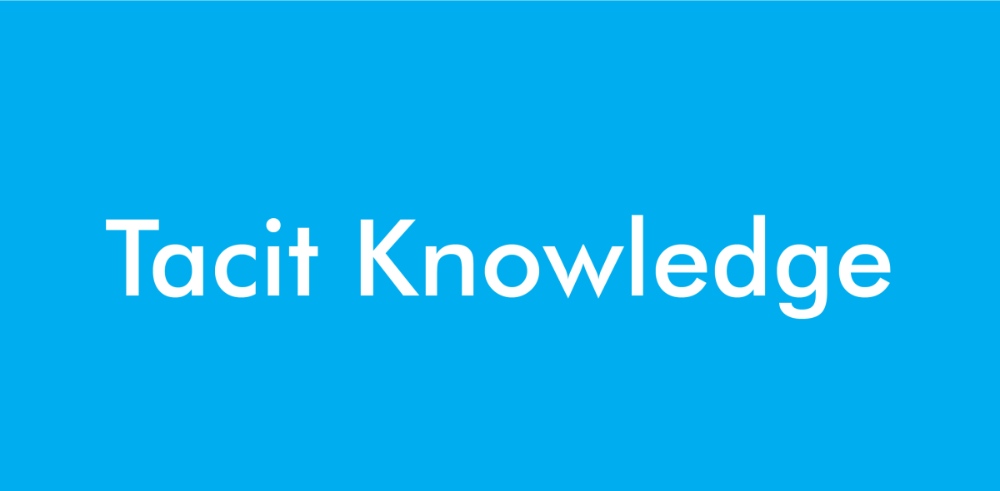Traditional methods often prove insufficient in dealing with complex problem-solving situations, as they rely heavily on explicit knowledge or rigid procedures. So, to address these issues, a strategic approach involves tacit knowledge that stems from an individual’s experiences and insights. In this article, we’ll familiarize you with the definition of tacit knowledge, its importance, examples, and tools to capture it.
What is Tacit Knowledge?
The definition of tacit knowledge involves a practical understanding gained from personal experiences, which is tricky to express clearly. Unlike explicit knowledge, it is more about personal feelings and situations. Additionally, its importance lies in using it to improve problem-solving and adapt to changing situations. So, this knowledge plays a key role in developing hard skills and nurturing a strong organizational culture.
Moreover, if organizations integrate a culture that promotes the sharing of tacit knowledge, they can access a wealth of experiential wisdom. Ultimately, it is a precious resource that empowers individuals to contribute their practical understanding to push the organization toward lasting success.
Why Tacit Knowledge is Important for Business?
In a time where industries are always adjusting to changes, written information isn’t enough. So, the usual methods that focus on strict procedures might not fully handle the complexities of real-world problems. That is why we need to realize the growing importance of tacit knowledge that is continuously developing. The following section will explore why it is a key player in a business environment.
- Prevents Knowledge Loos: Preserving valuable knowledge within an organization is crucial despite employee turnover. Also, implementing a systematic process to capture and define tacit knowledge safeguards insights and experiences to enhance a learning culture.
- Turns Every Employee into an Expert: When everyone in the company shares their practical know-how, they get a chance to become an expert in their assigned roles. Furthermore, a team of experts with deep knowledge will be ready for any market challenges.
- Improved Innovation: Besides, tacit knowledge enhances adaptability in dynamic markets and enables quick responses to change. Additionally, it fuels innovation to allow creative thinking and the development of groundbreaking solutions based on deep understanding.
- Boosts Decision-Making: It empowers employees to solve complex problems with experience and intuition. Plus, documenting tacit knowledge in a centralized space enables cross-departmental learning for informed decision-making and enhanced task performance.
Tacit Knowledge vs Explicit Knowledge
When it comes to managing knowledge, it’s crucial to understand what is tacit knowledge and its difference from explicit knowledge. Now, let’s look into the details of tacit knowledge versus explicit knowledge to know how they can bring success in different situations.
| Metrics | Tacit Knowledge | Explicit Knowledge |
|---|---|---|
| Definition | Tacit knowledge definition includes a type of knowledge that’s hard to put into words, often built and rooted in personal experiences. | On the other side, explicit knowledge is easily expressed, structured, and documented. |
| Nature of Knowledge | Tacit knowledge is often built into one’s subconscious and poses difficulty when attempting to convey it through formalized approaches. | Explicit knowledge is commonly present in easily shareable and communicable formats like documents, manuals, and databases. |
| Transferability | It is deeply rooted in personal skills that are hard to articulate. Additionally, its transfer depends on direct interactions and experience sharing. | This type of knowledge is easily articulated and transferable through writing and training. Moreover, it is structured for accessibility due to its formalized and communicable nature. |
| Creation and Storage | Tacit knowledge resides in individuals’ minds and proves challenging to document. Plus, techniques like storytelling, mentoring, or hands-on training capture this type of knowledge. | Explicit knowledge is created, documented, and stored. So, it takes various forms, such as written documents, databases, diagrams, or videos, to enhance accessibility to a broader audience. |
| Subjectivity | This knowledge is subjective and shaped by personal experiences and perspectives. Within the same field, diverse individuals may possess distinct tacit knowledge. | In contrast, explicit knowledge is more objective and standardized to allow verification and consistent communication. Furthermore, it minimizes the impact of personal viewpoints. |
| Example | Tacit knowledge examples include hard skills such as playing a musical instrument, riding a bike, and excelling in crisis management. | Frequently asked questions, Manuals, Databases, and procedural information. |
5 Tacit Knowledge Examples
Tacit knowledge is the insight that shapes creative work and the deep understanding of how we interact in our social lives. Additionally, the examples of tacit knowledge not only show how widespread it is but also point out its importance in many parts of our lives. So, after having a clear understanding of what is tacit knowledge, let’s look at 5 examples to show its impact in different areas.
1. Physical Skills
One of the tacit knowledge examples is mastering physical abilities like driving or cooking. However, these activities rely on hands-on practice and muscle memory, which are crucial for developing a natural understanding of the task. So, through consistent practice, you can improve your movements to perform tasks with a level of skill that surpasses theoretical understanding.
2. Professional Expertise
Tacit knowledge forms the foundation of professional expertise, notably in fields like medicine and engineering. However, seasoned professionals, such as doctors and engineers, gather this knowledge through hands-on experience and become proficient in problem-solving. Moreover, it provides an intuitive understanding crucial for handling complexities not explicitly outlined in textbooks.
3. Leadership
You cannot get good at leadership by just reading some books or going over a user manual. There’s no guaranteed process or training that can turn you into a leader. Plus, leadership comes from actually going through different experiences.
4. Social Skills
Social skills are developed through tacit knowledge to shape the ability for complex interaction and interpretation of cues. In addition to that, it involves understanding unspoken norms and adapting to different contexts through experiential learning.
5. Crisis Management
Crises management is another significant tacit knowledge example to draw on experiential wisdom for swift decision-making in high-pressure situations. Individuals with tacit knowledge use past experiences and anticipate outcomes. Plus, this valuable asset enables you to measure uncertainties that are crucial for professionals in emergency response, healthcare, or disaster management.
Tools to Capture Tacit Knowledge
As tacit knowledge is complex to put into words, it can be a challenge for organizations wanting to use it. The tools made for this job aim to connect what’s not said with what can be said. Moreover, they give ways to gather and share the valuable insights people bring to their roles. So, with a clear comprehension of tacit knowledge meaning, let’s explore the best tools to capture this knowledge in a document.
1. Knowledge Management Tools
Capturing unspoken insights and experiences can be facilitated using knowledge management tools for storing and sharing knowledge in your organization. In addition, tools like Docuo help organize and make valuable insights and expertise that are easily accessible. In this way, companies can promote a culture of ongoing learning and informed decision-making within an organization.

2. Audio and Video Recordings
You can use audio and video recordings to capture important non-verbal cues and details in interviews or informal discussions. Furthermore, these recordings don’t just capture spoken words but also keep crucial visuals and auditory elements.
3. Collaboration and Communication Tools
Companies can utilize collaboration tools like Docuo to support casual communication and the sharing of knowledge among teams. However, through this platform, you can create special channels or groups for talking about specific topics to make discussion more focused. Additionally, it makes collaboration smooth and lets team members share ideas, ask questions, and exchange tacit knowledge.
4. Surveys and Feedback Forms
If organizations use surveys and feedback forms, they can gather important insights on specific topics from their employees. By utilizing Feedeo, you can systematically collect opinions and suggestions from your workforce using interactive videos. So, in this way, you can boost employee engagement and offer an organized method to access the team’s hidden knowledge.
5. Storytelling Platform
Storytelling platforms motivate employees to share their experiences and expertise. For this purpose, you can use platforms like Bloomfire, TINYpulse, and internal blogs for individuals to express their knowledge through storytelling. Also, these platforms can encourage a culture of sharing to allow employees to effectively communicate and contribute to a shared understanding.
Conclusion
In the end, tacit knowledge meaning contains the in-built aspects of understanding that are difficult to express in words. This type of knowledge establishes a vital part of an individual’s expertise based on personal experiences and skills. Additionally, recognizing the importance of tacit knowledge enables you to understand the depth of experiential learning. So, for this purpose, we learned its significance, examples, and the tools such as Docuo to capture it.

Read more:


